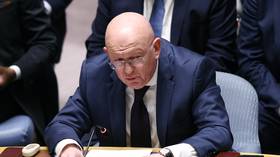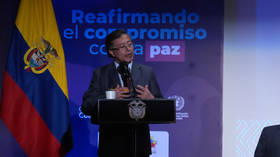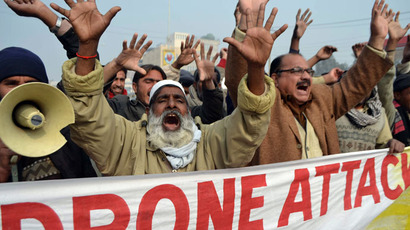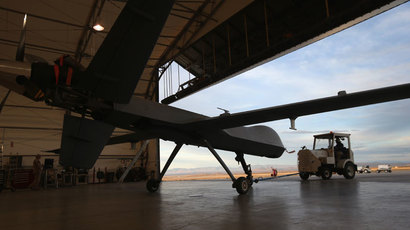‘Naming the Dead’: New project lists people killed by US drones in Pakistan
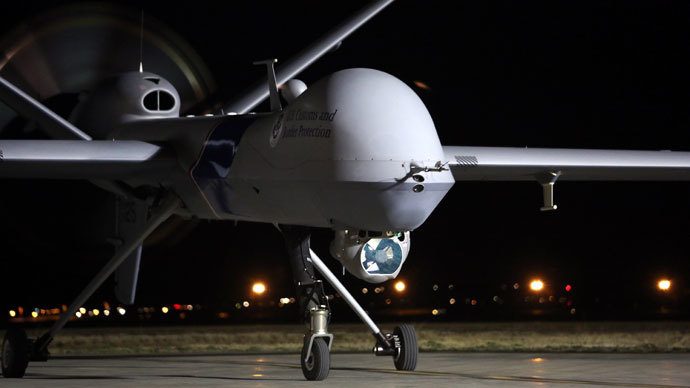
US drone strikes that the CIA claims target only al-Qaeda militants have killed at least 400 civilians in Pakistan over the past decade. That’s according to “Naming the Dead,” a new project that aims to identify and collect data on those killed by drones.
The number of those killed in the tribal regions of northwest
Pakistan by the US drones over the last nine years has been
estimated at more than 2,500 people. In most cases, there
is little or no information available on the victims of the
attacks.
Naming the Dead is an initiative of the London-based Bureau of
Investigative Journalism (TBIJ). The two-year-old project is
aimed at tracking drone victims and “to increase the
transparency around this conflict and inform the public
debate.”

The US has ordered more than 350 drone strikes since 2006 as the
CIA has sought to eliminate al-Qaeda militants. In that time,
drones have hit homes, cars, schools, shops and public
gatherings.
However, the Obama administration has been reluctant to
acknowledge that innocent civilians have been the victims of its
drone attacks, claiming that the missiles have only killed
militants.
In April 2012, John Brennan, then Obama’s chief counterterrorism
advisor and currently director of the CIA, called drones an
essential “counterterrorism tool.”
He was hailing the “benefit of technology,” which because
of its remote control “gives a clearer picture of the target
and its surroundings, including the presence of innocent
civilians.”
“It's this surgical precision – the ability, with laser-like
focus, to eliminate the cancerous tumor called an al-Qaeda
terrorist while limiting damage to the tissue around it,”
Brennan said at the time.
The CIA has claimed a high rate of killings of militants,
estimating that since May 2010 strikes have killed more than 600
militants, but no civilians.
But by analyzing credible media reports, court documents and
other sources (including leaked US intelligence reports,
WikiLeaks diplomatic cables and even “wanted lists”), TBIJ found
out about at least 400 civilians, who were “unlucky enough to
be nearby when militants were attacked.”
Victims of drone attacks
Of the named individuals:
- 295 are civilians, including 95 children
- 255 are alleged militants – of whom 74 are classed as senior commanders
- Just two are women
“Others were killed alongside their husbands or fathers, who
were believed to be militants. Still others were mistaken for
terrorists by drone operators sitting thousands of miles
away,” Naming the Dead team said in a statement.
So far, the Bureau has identified 568 individuals by name, and
aims to identify more of the dead and regularly publish more
details, including their ages, occupations and places they were
killed.
As a result of its own investigations, the Bureau has so far
assembled case studies on about 20 individuals killed by CIA
drones.

“The Bureau’s drones project has played an important part in
helping to inform the debate about the use of drones in
warfare,” managing editor of the Bureau, Christopher Hird,
said.
“Until now we have concentrated on getting the most reliable
numbers for those killed. But in the end this is about people –
men, women and children; civilians and militants. Naming the Dead
aims to both put names to these numbers and also to give fuller
biographical details of those who have died so that the public
and politicians can better understand the complexity of what is
happening on the ground in Pakistan.”



